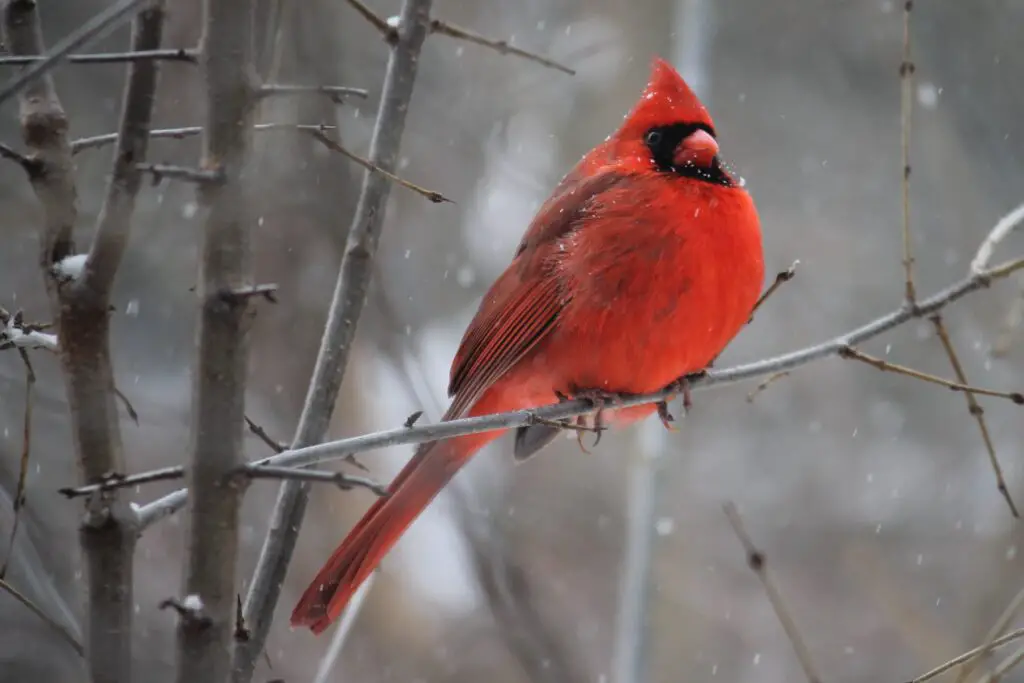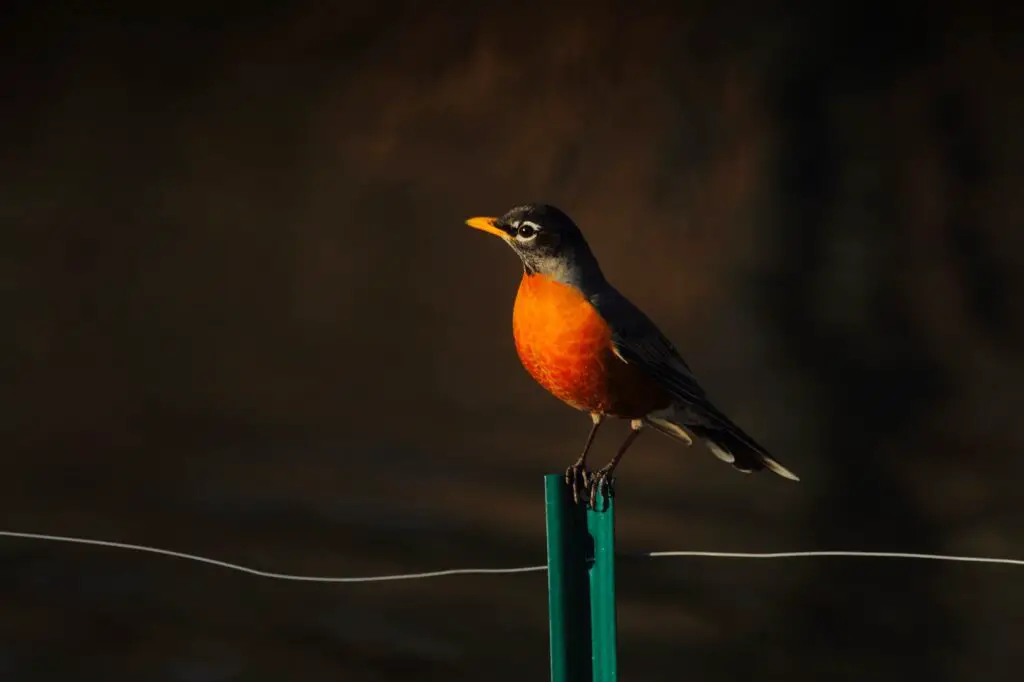For Pagans and Wiccans, birds hold a special place in their spiritual practices. They are often seen as messengers from the divine, symbols of freedom, and guides on the journey towards self-discovery. As winter approaches, birdwatching can become a peaceful way to connect with nature and deepen your understanding of the symbolic meanings behind different species.
In this beginner's guide to winter bird identification, we will explore common winter birds, their habitats, and characteristics. We will also delve into the symbolism associated with different bird species such as Cardinals and Robins. Additionally, we will discuss how birdwatching can enhance your spiritual practice by offering insight into the natural world and its interconnectedness with your own spiritual path. Join us on this journey towards discovering the beauty and significance of winter birds in Pagan and Wiccan traditions.
Understanding Bird Symbolism in Pagan and Wiccan Traditions
Birds have long been revered as messengers of the divine in Pagan and Wiccan traditions. They symbolize freedom, intuition, and a deep connection to the spirit realm. Rooted in nature, bird symbolism embodies the cycles of life, death, and rebirth. Different bird species hold unique spiritual meanings, representing various aspects of spiritual growth and transformation. Exploring bird symbolism can deepen your understanding of the natural world and enhance your spiritual practice.
Origins of Bird Symbolism
Bird symbolism dates back to ancient civilizations, where birds served as intermediaries between the earthly and spiritual realms. Egyptians, Greeks, and Celts associated birds with gods and goddesses. In Pagan and Wiccan traditions, birds are sacred messengers from the divine. By studying bird symbolism, we gain insights into our spiritual beliefs.
Importance of Birds in Pagan and Wiccan Rituals
Birds hold immense importance in Pagan and Wiccan rituals, serving as powerful symbols of the divine presence and spiritual guidance. Practitioners often incorporate feathered wings, bird images, and feathers in their ritual tools and decorations. By invoking bird spirits and embracing bird imagery, Pagans and Wiccans can deepen their connection with nature, tap into their intuition, and access spiritual wisdom. Birds are also associated with specific deities, such as the owl with Athena and the eagle with Zeus, further enriching rituals honoring these gods and goddesses. Celebrating the interconnectedness of all living beings, birds play a significant role in honoring the wisdom of the natural world.
Identifying Common Winter Birds In December and January
Winter is a wonderful time to observe the beauty of birds. By paying attention to their distinct winter plumage, behavior, and winter range, bird identification becomes easier. Some common winter birds in North America include tufted titmouse, downy woodpecker, song sparrow, and pine siskin. Setting up bird feeders attracts them, providing an opportunity for closer observation. Participating in citizen science projects like eBird contributes to bird population monitoring and conservation.
If you need help identifying, there are tons of resources for winter birding. The Cornell Lab of Ornithology has released a free app – Merlin – which helps you identify birds by sound all year long – even in the winter months! Their app should even work for Canada, the Bahamas, and Mexico – so you can bring it on your travels.
Characteristics of Winter Birds
Winter birds have adapted to survive harsh conditions, displaying unique characteristics. Many have specialized plumage like downy feathers to keep warm. Some form large flocks to find food and stay safe. They have specific feeding strategies such as caching food or relying on winter bird feeders. Understanding these characteristics aids in identifying, appreciating, and protecting them.
Habitats of Winter Birds Like Geese, Woodpeckers, and More
Winter birds can be found in a variety of habitats, such as woodlands, wetlands, open fields, and suburban areas. Woodpeckers, nuthatches, and chickadees rely on tree cavities in woodlands. Wetlands attract waterbirds like geese and ducks. Open fields provide grounds for snow buntings, sparrows, and finches to find food and cover. Understanding these habitats helps birders locate and observe wintering species, contributing to their conservation.
Exploring Bird Species and Their Symbolic Meanings
Each bird species holds its own symbolic meanings, reflecting spirituality, mythology, and cultural beliefs. Cardinals symbolize love, vitality, and divine guidance, associated with departed loved ones. Robins bring hope, renewal, and new beginnings with their song. Delve into bird symbolism for a deeper connection to nature and spiritual insights.
Cardinals and Their Significance
Cardinals, with their vibrant red plumage, are seen as spiritual messengers, representing love, hope, and the presence of departed loved ones. Their melodic song brings peace, joy, and a sense of spiritual upliftment. By honoring the significance of cardinals, we can embrace moments of deep emotional connection, reassurance, and guidance from the spiritual realm.

The Symbolism of Robins
Robins, with their cheerful song and red breast, symbolize hope, renewal, and new beginnings. They bring messages of joy, growth, and spiritual transformation. Spotting a robin is seen as a sign of good luck and an invitation to embrace positive changes. Their presence heralds the end of winter and encourages us to embark on transformative journeys. Embrace the symbolism of robins to nurture your spiritual growth and find inspiration in the cycles of life.

How can bird watching enhance your spiritual practice?
Discover how bird watching can enrich your spiritual journey. By connecting with nature, cultivating mindfulness, and observing the beauty of birds in their natural habitats, you can find inner calm, develop a sense of unity with all living beings, and tap into the wisdom and guidance that birds offer.
Symbolism associated with different winter bird species
Winter birds in Pagan and Wiccan traditions hold symbolic meanings, representing resilience, adaptability, and survival. Understanding these symbolism deepens your connection with nature during winter. Each bird species carries its own unique spiritual significance. Explore the symbolism of winter birds to enhance your spiritual practice.
Spiritual significance of birds in Pagan and Wiccan faiths
Birds hold great spiritual significance in Pagan and Wiccan faiths. They have long been revered for symbolizing freedom, intuition, and the connection between the earthly and spiritual realms. Incorporating bird symbolism into rituals and ceremonies can bring spiritual guidance and inspiration. Birds are seen as messengers, carrying divine messages and blessings. By observing and connecting with birds, you can tap into their wisdom and embrace their magical energy.
Frequently Asked Questions
How can observing and interacting with winter birds enhance your spiritual practice as a pagan or Wiccan?
Observing and interacting with winter birds can deepen your connection to nature and spirituality. These birds hold symbolic meanings in pagan and Wiccan traditions, making them powerful spiritual messengers. Bird-watching can be a meditative practice that helps you commune with the divine. Integrating bird observations into rituals adds intention and meaning to your spiritual practice.
What are some common winter birds that can be found in a pagan or Wiccan's backyard?
Some common winter birds that can be spotted in a pagan or Wiccan's backyard include the chickadee, cardinal, junco, and blue jay. These birds hold symbolic significance in paganism and Wicca. Providing them with food and water allows for a deeper connection with nature and honoring their presence. Winter bird watching can also serve as a meditative practice for pagans and Wiccans.
Conclusion
In conclusion, bird watching can be a powerful and enriching practice for Pagans and Wiccans. Not only does it connect you with the beauty of nature, but it also allows you to deepen your understanding of symbolism and spiritual significance. By identifying common winter birds and exploring their symbolic meanings, you can enhance your spiritual practice and incorporate these insights into your rituals and ceremonies. Take the time to observe and appreciate the characteristics and habitats of winter birds, such as cardinals and robins, and reflect on the deeper meanings they hold. By immersing yourself in the world of birds, you can tap into a rich source of inspiration and connection with the natural world around you.